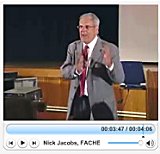The 10 minute drive to work was routine. It was one of those amazing September mornings where, no matter your age, your work responsibilities, or your lifestyle, you had to be in awe over the beauty and brilliance of the nearly cloudless, luminescent blue sky. It was warm, sunny, and what could only be described as a perfect morning. In fact, every time I experience those same stunning atmospheric conditions of that Western Pennsylvania morning, a tinge of telltale PTSD chemistry runs through both my connecting neurons and my bloodstream because what unfolded not two hours later evolved into an emotional catastrophe for our country.
The very nature of my position as the CEO of a hospital often revolves around one’s ability to cope with tragedy, heartbreak, and trauma.In fact, having spent the previous five years at the Level 1 Trauma center, communicating and dealing with tragedy had somehow become, at a certain level, just part of the job. That morning, however, was different. It was a virtual body blow to the soul on every level.
My 8AM meeting with a former Mossad agent and a U.S. Ranger was a discussion of the possibility of utilizing our sophisticated proteomics and genomic analytical equipment from the DoD funded research institute that was a part of our health system in detecting the presence of anthrax. It was a topic that I had hoped would never need to be broached in little Windber, Pennsylvania, but world matters, terrorism, and various political miss-steps had gotten us to this point in our international relationships.
In the middle of this meeting, my assistant politely interrupted our meeting to suggest I step into the administrative conference room to watch the television that had been tuned into the Today Show. As I stood to walk there, my cell phone rang.
It was my wife who said, “Are you watching this?”
My response was, “What?”
To which she replied, “A plane just hit the twin towers.”
“I’m on my way to the TV right now,” I replied.
And as I entered the small conference room, plane number 2 hit the second building. No one was really sure what was happening at that time, but that second plane did not seem like the first hit was a fluke. We watched for a few minutes more and then returned to the meeting where we continued our previous anthrax discussion.
Several minutes later, I received a call from the Trauma Center that they had just been notified that a plane with 157 passengers on board had reported a bomb on board and were headed toward the Johnstown airport. The caller suggested that I put our hospital on full trauma alert. My mind immediately sorted through those numbers and realized that at least 100 of those potential patients could not be cared for immediately in the three local hospitals due to staffing and capacity issues. I called an immediate full-alert which meant getting extra gurneys, calling in off-duty emergency room physicians, and preparing for a full disaster response.
A few minutes later when people described my complexion as a dull shade of gray, I received another call, and that call was more stark. Cancel the trauma alert, the plane has crashed near Shanksville, your paramedics will be needed onsite. By then, the word of the attack on the Pentagon, the World Trade Center and what some referred to as Fort Murtha because there were so many DoD funded plants operating in this area had painted a picture of warfare, and we were told there were approximately 1200 unaccounted for airplanes in the sky of the United States and we should be on the lookout for stolen ambulances and other emergency vehicles potentially containing terrorists.
Our paramedics were deployed and spent the day at the site of the crash. When they returned, they told me the following, “We have bad news and worse news. Everyone on that plane was killed, and no one there took precautions in the event there was anthrax or any other potentially lethal substance on board that flight. We could all be dead by the end of this week.”
Ironically, by the end of the week, the hospital was filled with sneezing, coughing employees who had either psychologically manifested an anthrax infection or had not taken proper precautions against a common cold. And that was the beginning.
A few weeks later I received the call from then County Coroner, Wallace Miller, asking about out capacity to house the remains of the victims found at the site in our minus 180C freezers at the research institute. Obviously, we were ready and willing to accommodate his request, but those remains were sent to the Bethesda area where all other victims remains were being held and genetically analyzed.
Our involvement with those first responders continued with the help of our in-house psychologist who was made available to them over the next several months. Since then, life has not been nor will it ever be the same for the United States of America. Our perceived impermeable status would forever be history.




